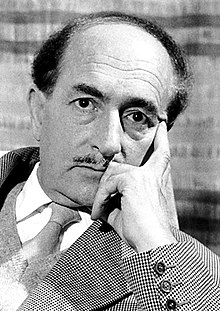|
Hermeticism (poetry)Hermeticism in poetry, or hermetic poetry, is a form of obscure and difficult poetry, as of the Symbolist school, wherein the language and imagery are subjective, and where the suggestive power of the sound of words is as important as their meaning.[1] The name alludes to the mythical Hermes Trismegistus. Hermeticism was influential in the Renaissance, after the translation into Latin of a compilation of Greek Hermetic treatises called the Corpus Hermeticum by Marsilio Ficino (1433–1499). Within the Novecento Italiano, Hermetic poetry became an Italian literary movement in the 1920s and 1930s, developing in the interwar period.[citation needed] Major features of this movement were reduction to essentials, abolishment of punctuation, and brief, synthetic compositions, at times resulting in short works of only two or three verses. TerminologyThe term ermetismo was coined in Italian by literary critic Francesco Flora (although with a very generic and superficial connotation) in 1936 and recalls a mystic conception of the poetic word because it makes reference to the legendary figure of Hermes Trismegistus (Thrice-Great Hermes) going back to hellenistic times, with writings such as Asclepius and the Corpus Hermeticum attributed to him.[2] During the same year (1936), Italian poet Carlo Bo published an essay on the literary magazine Il Frontespizio, by the title "Letteratura come vita (Literature as a way of life)", containing the theoretical-methodological fundamentals of hermetic poetry.  On the literary plane, the term Hermeticism thus highlights a type of poetry which has a close (i.e., hermetic, hidden, sealed)[3] character, complex in its construction and usually achieved by a sequence of analogies difficult to interpret. At the movement's core—which was modelled after the great French decadentist poets Mallarmé, Rimbaud and Verlaine—was a group of Italian poets, called hermeticists, who followed the style of Giuseppe Ungaretti and Eugenio Montale. Themes and stylesRejecting any direct social and political involvement, in order to detach themselves from the fascist culture, the hermetic group used a difficult and closed style in the analogic form, with a constant emotional introspection. Among these young intellectuals, some took strong anti-fascist stances, with Romano Bilenchi, Elio Vittorini, Alfonso Gatto and Vasco Pratolini being the main dissidents. "Tradition is Hermeticism's best ally".[4] Hermetic poetry opposes verbal manipulation and the ease of mass communication, which began taking place during Europe's dictatorial years, with the increasing brain-washing propaganda of the nazi-fascist regimes. Poetry therefore retreats into itself and assumes the task of returning sense to words, giving them back their semantic meaning, using them only when strictly necessary.[citation needed] The hermetic poets pursue the ideal of a "pure poesy", an essential composition without educational aims. Their central theme is the desperate sense of loneliness modern man experiences, having lost the ancient values and myths of the romantic and positivistic society, no longer retaining any certitudes to refer to. Man lives in an incomprehensible world, ravaged by wars and enslaved by dictatorships, therefore the poet has a disheartened vision of life, without illusions, and repudiates the word as an act of communication in order to give it an evocative sense only. So, hermetic poetry is poetry of moods, of interior reflection expressed by a subdued and pensive tone, through a refined and evocative language, concealing direct intimations to experience in a play of allusions. To describe the fleeting course of human life, Quasimodo would compose this famous hermetic poem "Ed è subito sera":
The hermetic poets took their inspiration from Ungaretti's second book, Sentimento del Tempo ("The Feeling of Time", 1933), with its complex analogies: one can thus consider Ungaretti as Hermeticism's first exponent. In the field of hermetic literary critique, Carlo Bo was its main interpreter, with his discourse La letteratura come vita ("Literature as a way of life") dated 1938, where he wrote the actual hermetic manifesto by describing poetry as a moment of Absolute. Among the other critics and theoreticians, to be mentioned are Oreste Macrì, Giansiro Ferrata, Luciano Anceschi and Mario Luzi. During the second half of the 1930s, and important hermetic group arose in Florence, around the Italian magazines Il Frontespizio and Solaria who were inspired by the works of Giuseppe Ungaretti, Salvatore Quasimodo e Arturo Onofri, and directly referred to European symbolism, also approaching more recent movements such as surrealism and existentialism. See alsoNotes
Bibliography
External links
|
Portal di Ensiklopedia Dunia